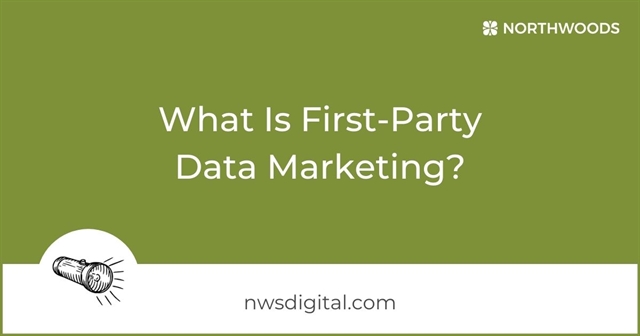By Katelyn Goerke
December 2, 2021
6 Minute Read
User research gives digital marketers valuable insight into what really matters to users. That insight then guides targeted, efficient campaigns.
So goes the theory. But in practice, can you trust users’ answers when you ask them what they want from your products, services, or your website? Do you really want to trust users to guide your marketing efforts? The reality is that they sometimes lie to you – unwittingly or by design – in interviews, focus groups and surveys.
Not to worry! Savvy marketers can tame even the most unreliable respondents by gaining an understanding of why users lie and by comparing their responses to data from other marketing sources.
What Is User Research?
User research is the process of gathering data from your target audiences to help inform decision-making within your organization. This data can apply to many broad-reaching decisions. It’s crucial to successful digital marketing campaigns and to developing website design and content that meet user needs.
Data gathering methods include:
- Surveys
- One-on-One Interviews
- Website Pop-Up Questionnaires
- Focus Groups
Why Do Users Lie?
Even with the best collection methods and practices, user input will have its flaws. Users lie for a few key reasons.
They Want to Fit In
Humans naturally want to fit in with others. This need can drive users to answer in the way they believe to be most socially acceptable and to suppress a more honest response.
This problem applies especially to focus groups, where group-think can take hold. The loudest, first or the most persuasive voices can echo in the voices of the more timid participants, who might feel uncomfortable disagreeing with the more assertive panelists or with what they perceive as a consensus. Instead of speaking frankly, they fall in line.
In one-on-one conversation, users might tend to provide answers that they feel the researcher wants to hear. Participants often want to please the researcher, especially when the participant thinks that the researcher had a role in creating the subject of critique. For example, if they feel they are speaking with the developer of the website under review, they might tend toward praise or soft, polite criticism, rather than frankly share their frustrations with your site’s look, feel and functionality. (“How was everything?” the waiter asks, after a sub-par meal. How often have you replied with a dishonest “fine, thank you.”)
They Don’t Remember
Human memory fails routinely. If participants can’t remember much, they can’t tell you much. They might stretch to give you their best guess through a foggy recollection about their experience with your brand. But how helpful is that?
Note that negative experiences stick more tenaciously than positive ones. If you ask users for information about your website they will tend to report their struggles, especially if they haven’t visited often enough to get comfortable with its navigation Such reporting tells you something, but falls short of fully demonstrating what works and what doesn’t for the typical user.
They Rationalize their Own Errors
Users always try to rationalize their decisions and beliefs, and they aren’t always logical about it. If a user can’t find a PDF or page on your website, it doesn’t always mean that your user experience needs help. People make mistakes. Users will miss key items on your website from time to time. Maybe your design and navigation are just fine; maybe they just didn’t look closely enough.
It’s human nature to rationalize decisions and actions – to, say, blame website design elements for degrading their user experience, when those experiences might be outliers that are irrelevant to most other users. Immediate reactions to user complaints can drive effort, time and resources to site changes that really don’t need to happen.
User Research Requires Reading Between the Lines
The truth is that many users don’t know what they want. Even if they may think they know, their imagined solutions might not actually address their (real or imagined) problems. You can’t please everyone. Sometimes, you can do exactly what a user asks of you and still not achieve the result that user seeks.
Sometimes what they don’t say matters more than what they do say. If they say absolutely nothing about significant parts of your site, it could mean that they don’t need or visit them regularly. Or it could mean that the site or your tool works perfectly, to the point that the experience is so seamless that it leaves nothing to say. Two very different user experiences can live within the same information vacuum.
So, what can we do to pull the truth from both readily shared information and silence? We can dive deeper into more data.
Combine User Research with Raw Data
Don’t simply take your users’ word for it. The best user research combines their input with data from other sources. That means diving into data from website analytics, social media insights, advertising data, and more. To understand the impact of what our users tell us, we need to know what’s actually happening with those tools and platforms.
Let’s say that user survey results suggest that existing customers have no trouble accessing product information on your website. We follow up with individual conversations with users, and they echo the survey response: No problem finding product info. Can we then conclude that the website experience related to product search is clear and easy for all users?
Not so fast.
Raw website data might tell a different story. Perhaps users regularly conduct multiple searches per session for similar terms. Perhaps user testing video recordings show them floundering to use the product search and restarting searches multiple times before eventually giving up. While veteran customers may have been telling their truth, they aren’t your only site visitors. Potential customers, who have no experience with your search tools and conventions, might have a very different story. And, of course, prospects who come and go without buying are harder to track down and survey. If you survey only current customers without incorporating other data, the insights you can gather from prospective customers will be lost.
Like all research methods, user research rises to full power when incorporated with other data, to open a global view of website performance.
If Users Lie, Does User Research Even Matter?
It matters – now more than ever, given modern customer targeting. So much of our marketing revolves around the unique needs of the user. With personalization becoming a key element of marketing strategies, it’s critical to speak with your users to gain their perspectives before investing time and energy in your marketing efforts.
That said, keep in mind the flaws inherent not only in direct user research, but also in all data you collect. Yes, users lie. But your website analytics and other raw data also don’t tell the full truth.
Google Analytics tells you how long someone spent on a web page, but it can’t tell you why that user came to that page or what he or she hoped to find. Social media insights can tell you which posts prompted users to engage and you can read the comments, but they don’t tell you which additional messages would stoke further interest in your brand.
All data has strengths and flaws. When using data in your decision making, keep in mind the key goal of each type of data and use data from diverse sources. It will help you to paint a full picture of what’s occurring on your website and will enhance your understanding of what your users seek from your marketing.
If you need assistance with user research or marketing strategy, Northwoods can help! Reach out to us for a complimentary consultation or additional information.
Related Blog Posts

Understanding your target audience is more important in marketing today than ever before. But audience data and personas are only useful if they're developed with your digital tactics in mind. Here's why the best personas are developed using data.

Design elements – color, imagery, font – matter. But the sitemap comes first, whether you’re embarking on a major redesign or a minor refresh. Here's why.

Transparency, choice and control are the new keywords of online marketing strategy and are integral to first-party data collection. Here's why and how you can improve your first-party data collection in a way that shows customers their purchase behaviors inspire your strategy – and not the other way around.